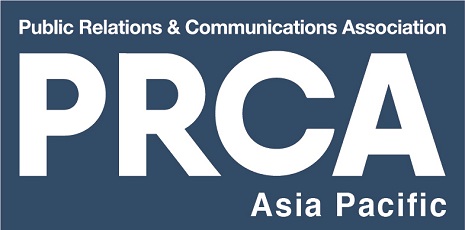Author: Karine Lohitnavy
Midas PR

For PR professionals, keeping a pulse on the trends that affect our industry is a survival skill in today’s fast-paced environment.
At this year’s PROI Global Summit in vibrant Rio de Janeiro, over 100 owners and directors from leading independent PR firms across 40 countries came together. They weren’t just there to network and enjoy the beautiful city; they were there to discuss the forces shaping the future of our industry. It was a meeting of minds, a gathering of the best and brightest in our field, all united by a common goal: to understand and navigate the ever-changing landscape of public relations.
These thought leaders exchanged insights and strategies for navigating the evolving public relations landscape, a process that offers immense potential for growth and learning. One of the summit’s highlights was a panel discussion that identified and explored five key trends poised to redefine PR, a hot topic with an ever-evolving answer.
Let’s dive into these five trends and explore what they mean for the future of PR:
Trend 1: Misinformation and Generative AI
Recent research shows that generative AI, a type of artificial intelligence that can create new content, is being used to spread disinformation. This means that AI is being used to create and share false information, which can be very misleading. This is not a new trend, but it’s becoming increasingly common, and it’s a big concern for the PR industry.
To combat this, PR teams must operate under strict ethical guidelines, help clients detect misinformation, and guide leaders on effective responses. Investing in digital training and establishing processes for evaluating AI tools is essential. PR professionals must be proactive in addressing these challenges by:
- Developing robust fact-checking processes and tools.
- Educating clients and the public on the risks of misinformation.
- Advocating for ethical guidelines and regulations around AI use.
- Collaborating with technology companies and media outlets to mitigate the spread of false content.
- Crafting effective crisis response plans for misinformation incidents.
Trend 2: Corporate Positions on Social Issues
Corporate social responsibility and the need for companies to take a stance on social issues are becoming increasingly important. This trend is driven by the growing awareness of social and environmental issues among consumers and the need for companies to demonstrate their commitment.
This trend spans across industries, with tech companies addressing diversity and inclusion and energy companies tackling climate change. To navigate this trend, PR professionals should:
- Develop comprehensive plans for addressing social issues.
- Communicate clearly, acknowledging the nuances of these issues.
- Maintain consistency and avoid knee-jerk responses.
- Engage allies and advocates to support their clients’ positions.
- Monitor and measure the impact of clients’ social issue strategies.
Trend 3: Labor Relations
The changing nature of work and its impact on labour relations are significant concerns. The shift towards a gig economy, the rise of remote work, and the need for companies to adapt to these dynamics are driving this trend.
PR professionals must balance employee expectations with management priorities, ensuring alignment and effective communication among diverse stakeholders, including employees, investors, and the public. Successfully navigating this trend involves:
- Understanding the power of employee storytelling and its impact on corporate reputation.
- Adopting a long-term approach to worker engagement and maintaining open communication channels.
- Involving Chief Communications Officers (CCOs) early in decisions on executive compensation and other policies.
- Preparing for labour actions and developing response plans.
- Considering how clients’ labour relations strategies affect other stakeholders.
Trend 4: Media Fragmentation
The rise of social media and the fragmentation of traditional media are reshaping the PR industry. The increasing popularity of social media platforms, the proliferation of online news sources, and the decline of traditional media outlets drive this trend.
Developing a comprehensive media strategy that effectively reaches and engages diverse audiences is crucial. By leveraging social media analytics and other tools, PR professionals can optimise their media strategies and ensure their messages resonate with the right audiences. Adapting to this new reality means:
- Understanding your audience and their media preferences.
- Utilising non-traditional news channels, such as social media, to reach your target audience.
- Developing a robust communications plan that includes varied media outreach.
- Helping clients develop a clear and consistent message across multiple channels and platforms.
- Prioritising media that share clients’ values and goals.
Trend 5: The Rise of Technology
The impact of technology on the PR industry, including the rise of AI-powered tools and social media analytics, is transformative. This trend is driven by the increasing availability and adoption of new technologies, revolutionising how PR professionals work and interact with their stakeholders.
As AI-powered tools and social media analytics continue to evolve, PR professionals must remain agile and adaptable, understanding the latest technologies and their applications. Leveraging these tools can optimise communication strategies and ensure messages reach and resonate with the right audiences. Responding to these developments necessitates:
- Leveraging AI-powered tools to enhance analytics, predictive modelling, and personalised communication strategies.
- Utilising social media analytics to measure the impact of campaigns and optimise strategies.
- Preparing for potential risks and challenges associated with AI and social media, such as data breaches and misinformation.
- Identifying and engaging with online influencers and thought leaders to amplify messages and build credibility.
- Developing a plan for measuring the ROI of AI and social media initiatives.
By embracing these trends and staying attuned to the needs of our clients and stakeholders, we can stay ahead of the curve, craft impactful strategies, and drive positive change. It’s important to remember that these trends are constantly evolving, and as PR professionals, we must be ready to adapt and learn continuously to stay relevant and effective in our roles.
